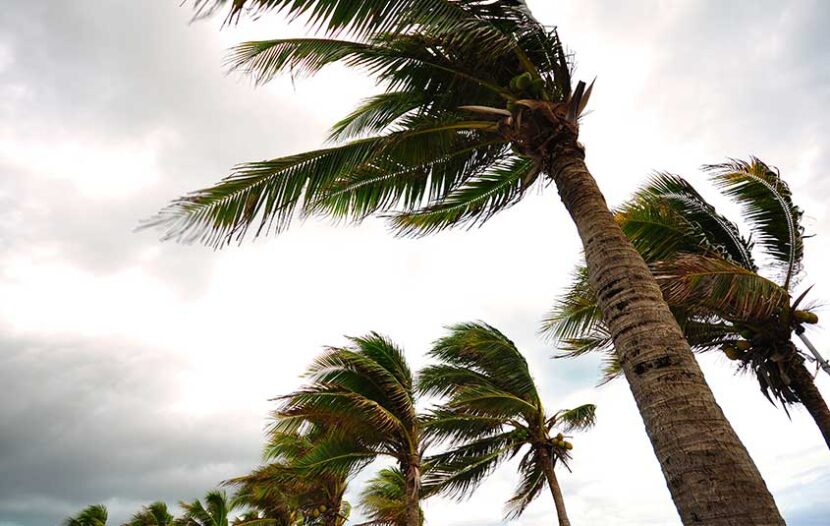MONTEGO BAY — Jamaica has closed several airports as Hurricane Beryl continues to barrel through the Caribbean Sea.
The Category 4 storm, which earlier killed at least six people and caused significant damage in the southeast Caribbean, prompted a hurricane warning for Jamaica, Grand Cayman, Little Cayman and Cayman Brac. Beryl was forecast to weaken slightly over the next day or two, but will still be at or near major-hurricane strength when it passes near or over Jamaica on Wednesday, near the Cayman Islands on Thursday, and into Mexico’s Yucatan Peninsula on Friday, according to the U.S. National Hurricane Center.
In an effort to ensure the safety of all residents and visitors, the Government of Jamaica has implemented response protocols, including the closure of the following airports (as of July 2):
- Sangster International Airport (Montego Bay) at 11:59 p.m.
- Norman Manley International Airport (Kingston) at 10:00 p.m.
- Ian Fleming International Airport (Ocho Rios) at 7:00 p.m.
These airports will remain closed on July 3. Their reopening will be announced pending post-storm assessments.
At Sangster International Airport, the following additional flights operated on July 2, 2024:
- Air Transat: TS 9517 Toronto (YYZ), 11:20 p.m.; TS 9487 Montreal (YUL), 11:00 p.m. and TS 9485 Montreal (YUL), 9:30 p.m.
- American Airlines: AA 9607 Miami (MIA), 6:35 p.m.
- Southwest Airlines: WN 8814 Orlando (MC), 5:15 p.m.
“I am encouraging all Jamaicans to take the hurricane as a serious threat,” Jamaica’s Prime Minister Andrew Holness said in a public address Tuesday. “It is, however, not a time to panic.”
Airlines including Air Canada, WestJet, Air Transat, Flair and Sunwing have updates for passengers with bookings for Jamaica, and in some cases other destinations in Beryl’s path, over the next several days.
IN THE DIRECT PATH
In Miami, U.S. National Hurricane Center Director Michael Brennan said Jamaica appears to be in the direct path of Beryl. He urged residents to find a safe place to shelter and stay there through Wednesday.
“We are most concerned about Jamaica, where we are expecting the core of a major hurricane to pass near or over the island,” he said in an online briefing.
Storm surge of 6-9 feet (1.8 to 2.7 meters) above typical tide levels are likely in Jamaica, as well as heavy rainfall.
Late Monday, Beryl became the earliest storm to develop into a Category 5 hurricane in the Atlantic and peaked at winds of 165 mph (270 kph) Tuesday before weakening to a still-destructive Category 4. Early Wednesday, the storm was about 125 miles (200 kilometers) southeast of Kingston. It had maximum sustained winds of 145 mph (230 kph) and was moving west-northwest at 20 mph (31 kph), said the U.S. National Hurricane Center.
A hurricane watch was in effect for Haiti’s southern coast and the Yucatan’s east coast. Belize issued a tropical storm watch stretching south from its border with Mexico to Belize City. A tropical storm warning was also in place for the entire southern coast of Hispaniola, an island shared by Haiti and the Dominican Republic.
Three people were reported killed in Grenada and Carriacou and another in St. Vincent and the Grenadines, officials said. Two other deaths were reported in northern Venezuela, where five people are missing, officials said. About 25,000 people in that area also were affected by heavy rainfall from Beryl.
One fatality in Grenada occurred after a tree fell on a house, Kerryne James, the environment minister, told The Associated Press. She said Carriacou and Petit Martinique sustained the greatest damage, with scores of homes and businesses flattened in Carriacou.
Grenada’s prime minister, Dickon Mitchell, said Tuesday there was no power, roads are impassable and the possible rise of the death toll “remains a grim reality.”
St. Vincent and the Grenadines Prime Minister Ralph Gonsalves has promised to rebuild the archipelago. He noted that 90% of homes on Union Island were destroyed, and that “similar levels of devastation” were expected on the islands of Myreau and Canouan.
The last strong hurricane to hit the southeast Caribbean was Hurricane Ivan 20 years ago, which killed dozens of people in Grenada.
With file from The Associated Press

